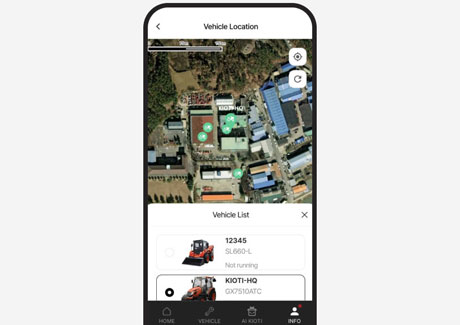Why Your Marketing Isn’t Relevant – And How To Fix It

There is about an 80-percent chance there is something fundamentally wrong with your marketing. It’s flawed because it’s about you, not them (your prospect or customer), because you’re the hero of your own story, and because you don’t demonstrate value.
The result is you push and publish a bunch of content that isn’t relevant to your audience. And that costs you an opportunity to show up differently in a crowded, cluttered, competitive marketplace.
The core of typical customer communication is the noble story of you, your company, your products, features and specs, your bullet points and infill.
Here’s the thing. The people on the receiving end of that communication couldn’t care less. Not until – or unless – you get to the part where you can demonstrate you understand their problems and have a solution to their pain.
So if you want to put yourself on the path to becoming someone people know, like and trust, and eventually sell somebody something, your messaging must put your customer first; their needs, wants, problems, desires, and goals.
Your customer needs to be both the central character and the hero in your marketing stories. You are simply coming alongside to bring clarity, direction and some tools to help them be successful on their grand journey.
Quickly creating emotional connections
Here’s the reality – and the conundrum – every marketer’s faces. It has never been easier to reach large numbers of people with our marketing messages, and it has never been more difficult to actually connect with them.
The average American adult is subject to 5,000 marketing messages a day, give or take, and you only have a few seconds to pique someone’s curiosity, and put them on notice you have something worth paying attention to. One of the ways we can do this of course is by telling stories.
When we read or hear a bunch of facts, only certain parts of the brain get activated. Scientists call these Broca’s area and Wernicke’s area. Overall, it hits our language processing parts in the brain, where we decode words into meaning. And that’s it. Nothing else happens.
When we are being told a story, though, things change dramatically. Not only are the language processing parts in our brain activated, but any other area in our brain that we would use when experiencing the events of the story are too. So stories put our whole brains to work.
Speaking of the brain, research in neuroscience tells us reasons lead to conclusions, while emotions lead to actions. And every single decision we make, including every buying decision certainly, is rooted in – and driven by – emotion.
So why in most sales and marketing interactions and touches, are we trying to inundate the left brains of our prospects and customers with data and specs and stats and reasons they should buy from us when it’s their right brain that is going to do the buying?
You can’t reason your way to a sale. You won’t get the prospect or customer to simply “conclude” you offer the best features or the most value or the best people. You instead have to make an emotional connection for a buying decision to occur.
Stories take the conversation away from data and facts, away from processing and organizing, away from skepticism and transactions. And no other company or organization has your founding story, your DNA. Bake that into your content. You are unique. And that’s the ultimate differentiator.
Contrast = Value
Another way to make your marketing more relevant is through value creation or creating a contrast between what is (your customer’s world without your solution), and what could be (their world, improved, with your solution in it).
Think about ads for exercise equipment, weight loss plans, supplements, or just about anything else in the diet and fitness categories. What do they show? Before and after photos, right? This is the flabby, tired, sick, rundown you before, and then this is the fit, energetic, healthier, engaged you after you buy and use the products.
You don’t need photos, but you should have similar messaging that creates contrast with a problem-centered present, and a solution-centered future. This will create a desire or incentive to change on the part of your customer or prospect in the process.
People respond to contrast. Contrast speeds up the connection to our brains, so we understand quickly and clearly whether something’s a good deal for us. The power is in the re-framing, in the transformation.
On this subject, I also like the use of “what if” as a mechanism to create contrast and a transfer to a solution. Listen to your local radio station ads for some good examples of this.
What if you never again had to worry about glasses or contacts? (Lasik) What if you never had to paint your house again? (vinyl siding) What if you never had to climb onto your home’s roof to clean leaves and sticks from your gutters again (gutter guards). What if you never had to work again? (Powerball). And on and on. You get the idea.
Creating urgency
Think for a moment about the objective of all marketing. You want somebody to do something, right? You want to persuade a customer or prospect to pick up the phone, spend another minute on your page, click, schedule a meeting, sign a contract, whatever.
To do that you must be persuasive in your messaging, and not merely informational, and you must provide your prospect or customer answers to three basic questions; 1) why change; 2) why now; 3) why you?
Your messaging must build a case, an effective call to action, by defining how you will positively impact your customer or prospect, and then compel them to act.
Again, you can do this by helping them recognize their needs, by sharing ideas on how to solve their problems, and by clearly communicating value with a distinct point of view.
And if all that fails, just go with a quote from the artist who sketched out early plans for flying machines, drew the Vitruvian man, painted the Mona Lisa and The Last Supper and dabbled in architecture, sculpture, engineering, geology, hydraulics and the military arts.
I have been impressed with the urgency of doing. Knowing is not enough. We must apply. Being willing is not enough. We must do.
Leonardo da Vinci
Summary
What does it take to make your marketing more relevant? To be different, engaging and memorable?
- Get their attention – quickly
- Make sure it’s all about them, not you
- Address their pain, solve their problem(s)
- Build contrast
- Create action through urgency
- Become someone people know, like and trust
Connect…compel…convert!


